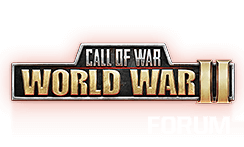Infantry advancing on Artillery.
Artillery opens fire before Infantry can engage.
Is Art the attacker? Even when the Inf arrive at the Art location and start their attack?
This gets strange to me...
Artillery initiates barrage on approaching Infantry. Art is attacker, Inf is defender.
Infantry continues approach and engages Artillery. ???
This matters 'cause all Inf is stronger on defense than offense. This means Inf attacking into artillery barrage will be stronger (defending) than inf that is not facing artillery barrage during their approach (attacking).
Am I reading this correctly?
Artillery opens fire before Infantry can engage.
Is Art the attacker? Even when the Inf arrive at the Art location and start their attack?
This gets strange to me...
Artillery initiates barrage on approaching Infantry. Art is attacker, Inf is defender.
Infantry continues approach and engages Artillery. ???
This matters 'cause all Inf is stronger on defense than offense. This means Inf attacking into artillery barrage will be stronger (defending) than inf that is not facing artillery barrage during their approach (attacking).
Am I reading this correctly?


 when I grab your lands !
when I grab your lands !